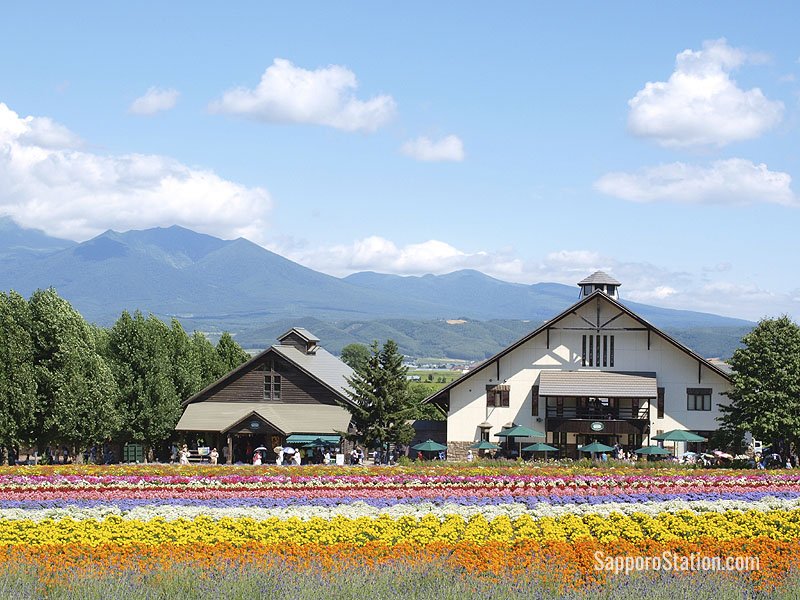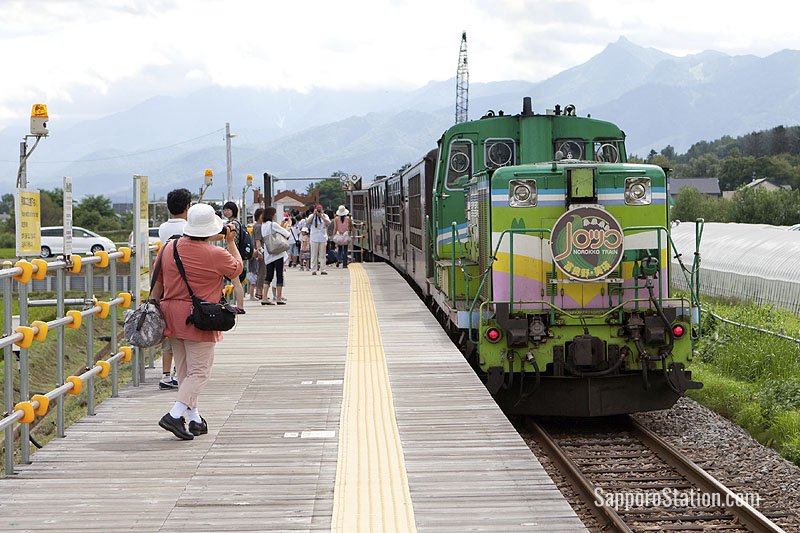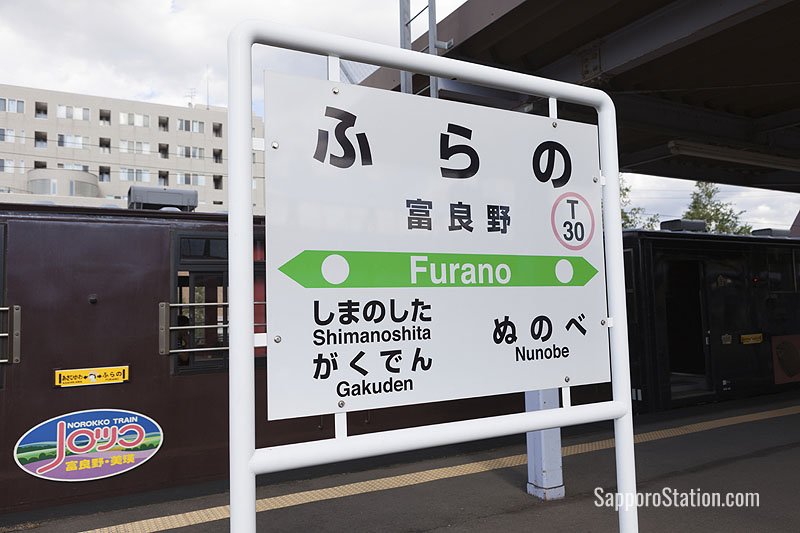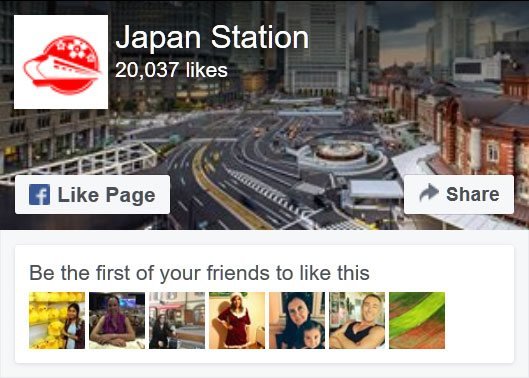Hokkaido Prefecture is laced with JR lines, and for those who like their tourism by train, it can be a delight.
Most tourists traveling outside of Sapporo will be using the Sapporo – New Chitose Airport Express, and the Hakodate Main Line, covering Sapporo – Otaru – Niseko – Hakodate and Sapporo – Asahikawa.
Asahikawa – Furano

Flower fields in Furano, Hokkaido
This requires you to take a 90-minute express train (see Hakodate Main Line article) north from JR Sapporo to JR Asahikawa, and then changing trains to the Furano Line (Furano Sen) to hook south.
This is definitely worth a visit in late spring and pre-harvest summer. The farmers of Furano and Biei organize themselves into planting lovely rolling fields with lavender, flowers, and other blooming crops, creating a patchwork carpet of colors and even a symphony of smells for tourists.

Norokko train at Lavender Farm Station, Hokkaido, Japan. Norokko is a sightseeing train that only runs during summer between Asahikawa to Furano Station
Overshadowed on two sides by mountains (particularly the Taisetsu mountain range – Hokkaido’s highest), vistas in every direction are camera bait. Get off at Biei and ask the local tourism desk to arrange a taxi out to some picturesque spots. Then head further south and loop back to JR Sapporo from JR Furano, on the Nemuro Main Line (Nemuro Honsen) via JR Takikawa. Easily accomplished as a day trip.

Furano Station Sign
Travel time from JR Sapporo-JR Furano (via JR Asahikawa: recommended): 2 to 3 hours
Cost: 5,990-6,300 yen
JR Furano back to JR Sapporo (via Takikawa): about 2 hours, 4,140 yen.
Sassho Line (Sassho Sen)
This line emanates from JR Sapporo and takes commuters to the Health Sciences University of Hokkaido (or Hokkaidō Iryō Daigaku), located in a farming community outside of Sapporo’s suburbs where cheap land was converted into a campus. Beyond that are local trains that lead to what feels like the back-end of nowhere, with cutely-named farming communities many Hokkaido residents may not have heard of.
JR Sapporo – JR Shin-Totsukawa terminus: 2 ½ to 3 hours, three trains daily
Cost: 1,640 yen.
Sapporo – Obihiro – Kushiro Line
Make sure to board an express train from JR Sapporo, or else you will have to change trains at JR Minami-Chitose Station (the one just before New Chitose Airport) after waiting on a train platform buffeted by freezing winter winds. This route wends through Hokkaido’s pleasant Hidaka Mountains (particularly ski resort area Tomamu, with its twin hotel towers providing mountain views from every room). Once past that, the land spreads out, and you’re on rather dull plains surrounding the farming community of Obihiro (Hokkaido’s seventh-largest city, but out there it’s a metropolis).

Obihiro Station Building
Beyond that are the outback cities of Kushiro, Nemuro, and Abashiri.
It’s an interesting trek. However, it will take a good chunk of the day to get there, and the sights to see are not the cities themselves (meaning you will have to plan in advance, arrange transit to the local nature sights, and find accommodation afterwards). This is not a day trip, so unless you have the better part of a week and an urge to go beyond the beaten path of most foreign tourists to Hokkaido, the trip is not recommended.
Cost of an express train from Sapporo to Kushiro: 9,370 yen
Time in transit: 4 to 4½ hours
A complete map of JR Hokkaido trains
Article by Dr. Debito Arudou. All rights reserved.
